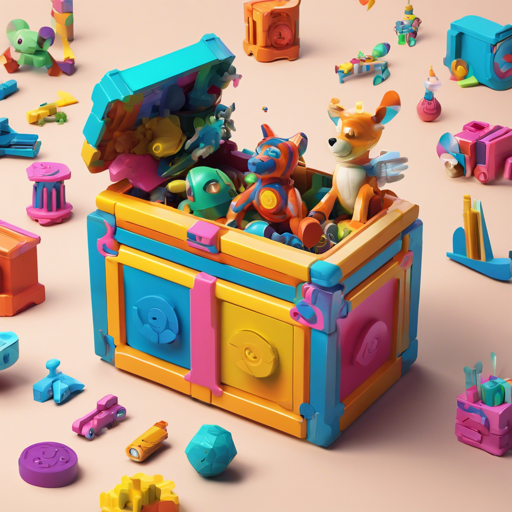The world of text-to-image generation is becoming increasingly captivating, especially when combined with creative tools like Toy Box Flux. Built on cutting-edge LoRA technology, it produces detailed and adorable toy designs with just a few simple prompts. In this article, you will learn how to effectively use Toy Box Flux for your toy design projects, along with troubleshooting ideas to help you along the way.
Getting Started with Toy Box Flux
- Model Description: Toy Box Flux is a model trained on AI-generated images, blending existing 3D designs with unique styles. It produces super cute and intricate toy designs by focusing on specific keywords.
- Training Data: Approximately 71 synthetic images were curated and utilized to train the model, ensuring it captures the right essence of toy designs.
- Best Practices: For optimal results, use the Euler or Deis sampler during generation.
How to Generate Your 3D Toy Design
Using the Toy Box Flux model is as simple as inputting the right keywords. Imagine you are a chef: the ingredients you choose will determine the flavor of your dish. Here’s how to mix your ‘ingredients’ to create stunning 3D renders:
- Set the Trigger Keywords: Use trigger phrases like t0yb0x, simple toy design, and detailed toy design to define your project’s focus.
- Adjust Strength Levels: Recommended strengths for the best results range between 0.7 and 0.9. This is akin to adjusting the temperature of your oven; it can significantly impact the outcome of your render.
- Input Your Desired Toy Designs: For example, you can input designs like “wizard in a purple robe” or “female Broadway singer” to generate specific images. This is like telling your kitchen exactly what dish you want to create.
Example Outputs
Here are some imaginative prompts and the outputs you can expect:
1. t0yb0x 3D render of a toy design, a rocket.
Output: images3D__00315_.png
2. t0yb0x 3D render of a cute toy design, a wizard in a purple robe, smile.
Output: images3D__00429_.png
3. t0yb0x 3D render of a toy design, a knight.
Output: images3D__00323_.png
4. t0yb0x 3D render of a toy design, a family of 3 at a dining room table.
Output: images3D__00344_.png
Just like how a wizard conjures delightful spells, you too can create magical toy designs effortlessly through the power of prompts!
Troubleshooting Common Issues
Even the best models can run into hiccups occasionally. Here are some common issues you may encounter and their solutions:
- Image Quality Issues: If the generated images lack detail, ensure that you are using the right strength settings and specific keywords to refine the output.
- Inconsistent Render Results: If the outputs don’t match your expectations, consider tweaking your prompts or adjusting the selection of training images. This is similar to experimenting with flavors until you find the perfect recipe.
- Animal Designs Not Adequately Generated: Due to limited data in training images for animal models, results may vary. For best outcomes, focus on objects and human subjects instead. If you want to enhance your skills further, consider using the internet’s vast resources.
For more insights, updates, or to collaborate on AI development projects, stay connected with fxis.ai.
Conclusion
At fxis.ai, we believe that such advancements are crucial for the future of AI, as they enable more comprehensive and effective solutions. Our team is continually exploring new methodologies to push the envelope in artificial intelligence, ensuring that our clients benefit from the latest technological innovations.
Now that you have the keys to the Toy Box Flux, unleash your creativity and start generating delightful toy designs with ease!

